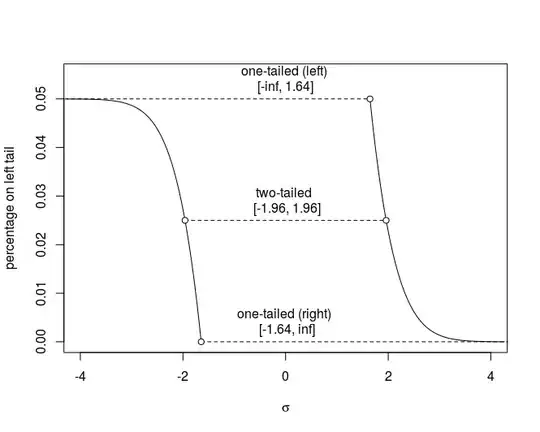Suppose we have iid data $X_i$ with known variance $\sigma^2$, and wish to write an asymptotic $1-\alpha $ coverage CI for the population mean $\mu$. CLT implies that if $z_q$ represents the $q$ quantile of a standard normal, $$z_{\alpha/2}=-z_{1-\alpha/2}\leq \frac{\bar X-\mu}{\sigma/\sqrt n}\leq z_{1-\alpha/2}$$
occurs (asymptotically) with probability $1-\alpha$ and thus implies a CI for $\mu$ of $\bar X\pm z_{1-\alpha/2}\frac{\sigma}{\sqrt n}.$
Any particular reason we take symmetric bounds, or is this just a matter of simplicity? For instance, it seems to me we could have also used
$$ z_{q_1}\leq \frac{\bar X-\mu}{\sigma/\sqrt n}\leq z_{q_2}$$
for any $q_2-q_1=1-\alpha.$
Update: By "symmetric," I mean using $q_2=1-q_1.$
